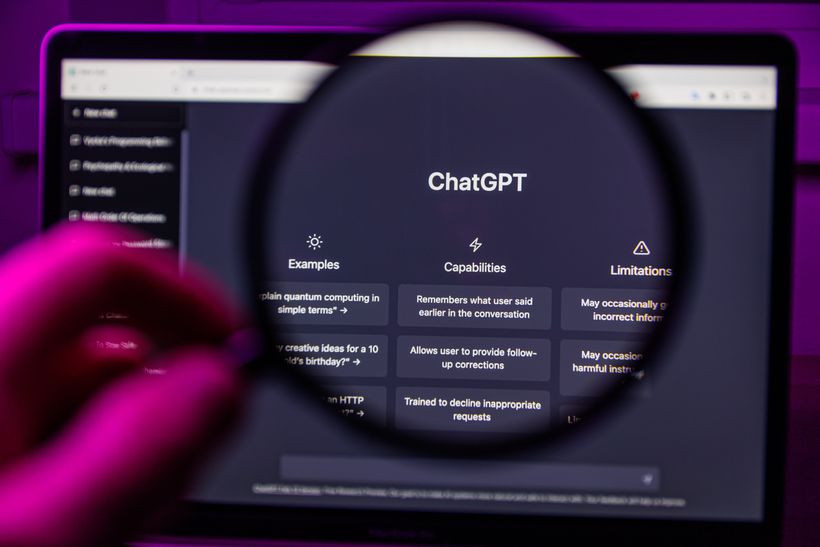Google's recent rollout of AI Overviews (previously called “Search Generative Experience”) at its annual developer conference is being hailed as the biggest transformation in search since the company was founded.
This isn’t a side project for Google — it fundamentally alters how content gets discovered, consumed, and valued online. If you're in marketing, PR, content strategy, or run a business that depends on online visibility, this requires a fundamental shift in your thinking.
What Is AI Overviews?
Instead of showing users a familiar list of blue links and snippets, Google now uses artificial intelligence to generate a summary answer at the very top of many search results pages. This AI-generated box pulls together content from across the web and tries to answer the user’s question instantly—without requiring them to click through to individual websites.
Here’s what that looks like:
You type in a question like “What are the best strategies for handling a media crisis?”
Instead of just links, you see a big AI-generated paragraph with summarized strategies, possibly quoting or linking to 3-5 sources—some of which might not even be visible unless you scroll or expand the summary. Welcome to the new digital gatekeeper.
Elizabeth Reid, VP of Search at Google states "Our new Gemini model customized for Google Search brings together Gemini’s advanced capabilities — including multi-step reasoning, planning and multimodality — with our best-in-class Search systems.
Let's breakdown this technobabble.
Think of Gemini as the brain behind Google’s search engine that’s now:
Even More Focused on User intent
For years, SEO strategies were built around guessing and gaming the right keywords: “What exact phrase are people typing into Google?” That approach led to over-optimized content — pages stuffed with phrases like “best expert speaker Boston cleantech” — written more for algorithms than actual humans. But with Google Gemini and other AI models now interpreting search queries like a smart research assistant, the game has changed entirely. Google is no longer just matching phrases — it’s interpreting what the user wants to do and why they’re asking.
Here’s What That Looks Like:
Let’s say someone searches:
“How do I find a reputable expert on fusion energy who can speak at our cleantech summit?”
In the old system, pages that mentioned “renewable energy,” “expert,” and “speaker” might rank — regardless of whether they actually helped the user solve their problem.
Now Google more intuitively understands:
• The user wants to evaluate credibility
• The user is planning an event
• The user needs someone available to speak
• The context is likely professional or academic
If your page simply has the right keywords but doesn’t send the right signals — you’re invisible.
Able to plan ahead
Google and AI search platforms now go beyond just grabbing facts. They string together pieces of information to answer more complex, multi-step queries. In traditional search, users ask one simple question at a time. But with multi-step queries, users are increasingly expecting one search to handle a series of related questions or tasks all at once — and now Google can actually follow along and reason through those steps. So imagine you’re planning a conference. A traditional search might look like:
"Best conference venues in Boston”
But a multi-step query might be:
“Find a conference venue in Boston with breakout rooms, check availability in October, and suggest nearby hotels with group rates.”
This used to require three or four different searches, and you’d piece it together yourself.
Now Google can handle that entire chain of related tasks, plan the steps behind the scenes, and return a highly curated answer — often pulling from multiple sources of structured and unstructured data.
Even Better at understanding context
Google now gets the difference between ‘a speaker at a conference’ and ‘a Bluetooth speaker’ — because it understands what you mean, not just what you type.” In the past, Google would match keywords literally. If your page had the word “speaker,” it might rank for anything from event keynotes to audio gear. That’s why so many search results felt off or required extra digging.
Now Google reads between the lines. It understands that “conference speaker” likely refers to a person who gives talks, possibly with credentials, experience, and a bio. And that “Bluetooth speaker” is a product someone might want to compare or buy.
Why this matters for marketers: If you’re relying on vague or generic content — or just “keyword-stuffing” — your pages will fall flat. Google is no longer fooled by superficial matches. It wants depth, clarity, and specificity.
Reads More Than Just Text
Google now processes images, videos, charts, infographics, and even audio — and uses that multimedia information to answer search queries more completely. This now means that your content isn’t just being read like a document — it’s being watched, listened to, and interpreted like a human would.
For example:
• A chart showing rising enrollment in nursing programs might get picked up as supporting evidence for a story about healthcare education trends.
• A YouTube video of your CEO speaking at a conference might be indexed as proof of thought leadership.
• An infographic explaining how your service works could surface in an AI-generated summary — even if the keyword isn’t mentioned directly in text.
Ignoring multimedia formats? Then, your competitors’ visual storytelling could be outperforming your plain content. Because you're not giving Google the kind of layered, helpful content that Gemini is now designed to highlight.
Why This Matters
There's a big risk here. Marketers who ignore these developments are in danger of becoming invisible in search.
Your old SEO tricks won’t work.
Your content won’t appear in AI summaries.
Your organization won’t be discovered by journalists, customers, or partners who now rely on smarter search results to make decisions faster.
If you’re in communications, PR, media relations, or digital marketing, here’s the key message.
You are no longer just fighting for links. You need to fight to be included in the Google AI summary itself at the top of search results - that's the new #1 goal. Why?
Journalists can now find their answers before ever clicking on your beautifully written news page.
Prospective students, donors, and customers will often just see the AI’s version of your content.
Your brand’s visibility now hinges on being seen as “AI-quotable.”
If your organization isn’t optimized for this new AI-driven landscape, you risk becoming invisible at the very moment people are searching for what you offer.
How You Can Take Action (and Why Your Role Is More Important Than Ever)
This isn’t just an IT or SEO problem. It’s a communications strategy opportunity—and you are central to the solution.
What You Can Do Now to Prepare for AI Overviews
1. Get Familiar with How AI “Reads” Your Content
AI Overviews pull content from websites that are structured clearly, written credibly, and explain things in simple language.
Action Items: Review your existing content: Is it jargon-heavy? Outdated? Lacking expert quotes or explanations? Then, it's time to clean house.
2. Collaborate with your SEO and Web Teams
Communicators and content creators now need to work hand-in-hand with technical teams.
Action Items: Check your pages to see if you are using proper schema markup. Are you creating topic pages that explain complex ideas in simple, scannable formats?
3. Showcase Human Expertise
AI values content backed by real people—especially experts with credentials.
Action Items: Make sure your expert profiles are up to date. Make sure you continue to enhance them with posts, links to media coverage, short videos, images and infographics that highlight the voices behind your brand and make you stand out in search.
4. Don’t Just Publish—Package
AI favors content that it can easily digest and display such as summary paragraphs, FAQs, and bold headers that provide structure for search engines. This also makes your content more scannable and engaging to humans.
Action Items: Repurpose your best content into AI-friendly formats: think structured lists, how-tos, and definitions.
5. Monitor Your Presence in AI Overviews
Regularly search key topics related to your organization and see what shows up.
Action Items: Is your content featured? If not, whose is—and identify what they doing differently.
A New Role for Communications: From Media Pitches to Machine-Readable Influence
This isn’t the end of communications as we know it—it’s an evolution. Your role now includes helping your organization communicate clearly to machines as well as to people.
Think of it as “PR for the algorithm.” You’re not just managing narratives for the public—you’re shaping what AI systems say about you and your brand.
That means:
• Ensuring your best ideas and experts are front and center online.
• Making complex information simple and quotable.
• Collaborating cross-functionally like never before.
Final Thought: AI Search Rewards the Prepared
Google’s new AI Overviews are here. They’re not a beta test. This is the future of search, and it’s already rolling out.
If your institution, company, or nonprofit wants to be discovered, trusted, and quoted, you can no longer afford to ignore how AI interprets your online presence.
Communications and media professionals are now at the front lines of discoverability. And the best way to lead is to act now, work collaboratively, and elevate your role in this new era of search.
Want to see how leading organizations are getting ahead in the age of AI search?
Discover how ExpertFile is helping corporations, universities, healthcare institutions and industry associations transform their knowledge into AI-optimized assets — boosting visibility, credibility, and media reach. Get your free download of our app at www.expertfile.com





